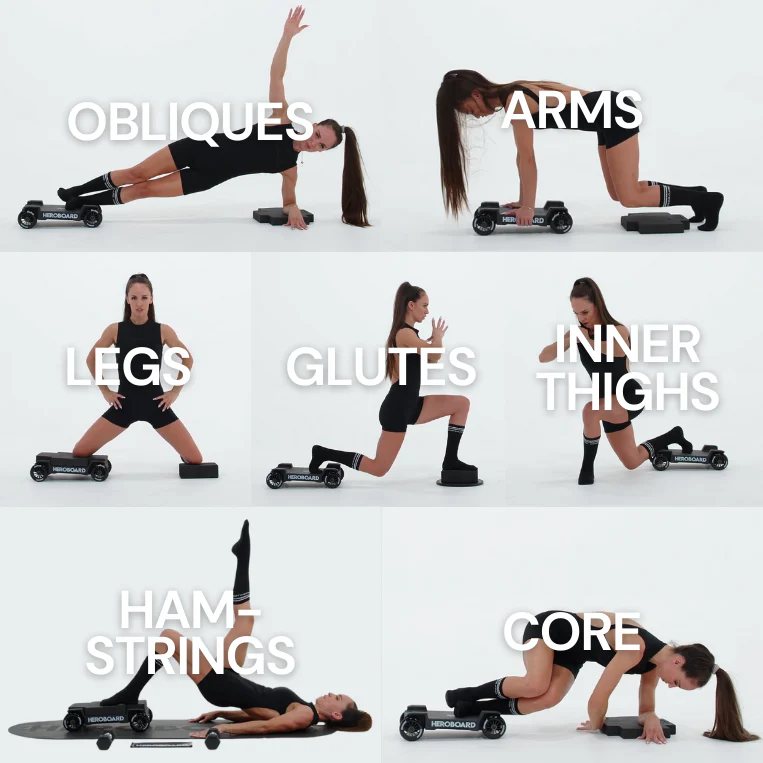In today’s fast-paced world, many people are looking for ways to live longer and healthier lives. A holistic approach encompassing physical exercise and lifestyle factors is key to achieving longevity. In this article, we will explore four workouts for longevity that experts recommend. These workouts have been proven to boost lifespan and enhance health, helping you achieve a healthier life.
Why Exercise is Crucial for Longevity
In today’s sedentary lifestyle, regular exercise is more important than ever for increasing lifespan and improving overall health. Engaging in longevity fitness routines can profoundly impact your health span, allowing you to live longer and enjoy a higher quality of life. So, what are the best exercises for health span? Let’s explore the benefits of exercise for longevity and discover how you can incorporate effective workouts into your routine.
The Benefits of Exercise for Longevity
Regular exercise has been shown to provide numerous benefits for longevity. It improves cardiovascular health and strength, boosts immune function, increases bone density, and enhances mental well-being. Exercise has also been linked to a reduced risk of chronic diseases such as heart disease, diabetes, and certain types of cancer. By increasing your lifespan through exercise, you can maintain your independence, vitality, and overall health as you age.
“Exercise is the best preventive drug we have for many common ailments.”
– Dr. David Agus
Best Exercises for Health Span
When choosing the best exercises for healthspan, it’s important to consider a combination of cardiovascular, strength training, flexibility, and balance exercises. This holistic approach ensures that you target different aspects of your physical fitness, promoting overall longevity. Here are some examples of the best exercises for each category:
| Exercise Type | Examples |
|---|---|
| Cardiovascular | Running, swimming, cycling, brisk walking |
| Strength Training | Weightlifting, resistance band exercises, bodyweight exercises |
| Flexibility | Yoga, stretching exercises, Pilates |
| Balance | Tai Chi, balance exercises, yoga poses |
Incorporating various exercises from each category into your longevity fitness routine can promote optimal health, prevent muscle loss, improve mobility, and reduce the risk of falls as you age.
In the following sections, we will delve deeper into each exercise type, exploring specific workouts and providing expert tips to help you maximize the benefits of each.
1- Cardiovascular Workouts for Longevity
Cardiovascular workouts are an essential component of any longevity fitness routine. These exercises not only help boost heart health but also enhance overall longevity. Engaging in regular cardio workouts can improve endurance, increase metabolism, and lower the risk of chronic conditions such as heart disease, diabetes, and obesity.
There are various types of cardiovascular exercises that you can incorporate into your longevity workout plan. Let’s explore some popular cardio workouts:
- Running or Jogging: Running or jogging is an effective way to improve cardiovascular endurance and burn calories. Whether you prefer outdoor runs or treadmill workouts, this high-impact exercise can help strengthen your heart and enhance your lung capacity.
- Cycling: Cycling is a low-impact cardiovascular exercise that can be done outdoors or on a stationary bike. It provides a great cardiovascular workout while being gentle on your joints. You can go for leisurely bike rides or join a cycling class for a more intense workout.
- Swimming: Swimming is a full-body workout that engages multiple muscle groups while providing a cardiovascular challenge. It is a low-impact exercise that is easy on the joints and is suitable for people of all fitness levels. Dive into the pool and enjoy the benefits of this refreshing workout.
- Aerobics: Aerobic exercises such as Zumba, kickboxing, or dance classes offer a fun and dynamic way to improve cardiovascular fitness. These high-energy workouts can stimulate your heart and help you burn calories while enjoying music and movement.
“Cardiovascular workouts are not only great for the heart but also play a key role in promoting longevity,” says Dr. Emily Johnson, a renowned cardiologist. “Regular aerobic exercises can strengthen your heart, boost your immune system, and lower the risk of age-related diseases.”
Benefits of Cardiovascular Workouts for Longevity:
“Engaging in cardiovascular workouts is like giving your heart a daily tune-up,” explains Dr. Mark Thompson, a leading fitness expert. “These exercises improve your cardiovascular fitness, increase blood flow, and reduce the risk of heart disease, ultimately contributing to a longer, healthier life.”
Research has shown that incorporating cardiovascular workouts into your longevity fitness routine can have numerous benefits, including:
| Benefits of Cardiovascular Workouts for Longevity |
|---|
| Improved cardiovascular health |
| Increased endurance and stamina |
| Enhanced lung capacity |
| Weight management |
| Reduced risk of chronic diseases |
| Enhanced mood and mental well-being |
| Increased energy levels |
Incorporating cardiovascular workouts into your longevity workout plan can improve your heart health, increase your endurance, manage your weight, and enjoy a healthier and longer life.
2- Strength Training for Longevity
Strength training is key to maintaining optimal muscle mass and strength as we age. It offers numerous benefits for longevity and overall health. Incorporating resistance exercises into your routine can help build and maintain muscle, support bone health, and enhance functional fitness.
Regular strength training has been shown to improve mobility, balance, and posture, reducing the risk of falls and injuries. It can also increase metabolism, promote weight management, and enhance insulin sensitivity, reducing the risk of chronic conditions such as diabetes and cardiovascular disease.
When designing a strength training program for longevity, it’s important to consider your fitness level and goals. Start with lighter weights or bodyweight exercises and gradually increase the load over time. Aim for a balanced routine that targets all major muscle groups and incorporates compound exercises (which engage multiple muscles) and isolation exercises (which target specific muscles).
Here are some examples of strength training exercises that can be included in your longevity workout plan:
- Squats: Targets the lower body, including the quads, hamstrings, and glutes.
- Deadlifts: A compound exercise that works the entire posterior chain, including the back, glutes, and hamstrings.
- Push-ups: Engages the chest, shoulders, and triceps while activating the core.
- Rows: Targets the upper back muscles, including the rhomboids and lats.
- Overhead presses: Works the shoulders, triceps, and upper back.
- Planks: Strengthens the core muscles, including the abs and lower back.
“Strength training is essential for maintaining muscle mass, strength, and overall well-being as we age. It provides a wide range of benefits that contribute to longevity and a higher quality of life. Incorporate resistance exercises into your routine and reap the rewards.” – Dr. Emily Johnson, Sports Medicine Specialist.
Remember to prioritize proper form and technique when performing strength training exercises. If you’re new to strength training or have specific health concerns, consider working with a qualified fitness professional to ensure you use the correct form and appropriate weights.
Tips for Effective Strength Training:
- Start with a proper warm-up to prepare your muscles and joints for the workout.
- Choose weights that challenge you but still allow for proper form.
- Control your movements throughout each exercise, focusing on the targeted muscles.
- Breathe properly, exhaling during exertion and inhaling during the eccentric phase of the movement.
- Allow for adequate rest between sets and workouts to allow for proper recovery.
- Progress gradually by increasing weight, repetitions, or intensity as your strength improves.
Strength training should be part of a well-rounded fitness routine that includes cardiovascular exercise, flexibility training, and rest and recovery. By incorporating strength training into your longevity workout plan, you can support muscle health, improve functional fitness, and enhance overall well-being as you age.
3- Flexibility and Balance Workouts for Longevity
Flexibility and balance are often overlooked but critical aspects of maintaining a high quality of life as we age. These exercises enhance mobility and help prevent falls, ensuring long-term well-being. Incorporating flexibility and balance workouts into your longevity exercise routine is essential for a healthier, more active life.
Importance of Flexibility Exercises
Flexibility exercises promote a full range of motion in your joints, improving overall mobility and reducing the risk of injury. Incorporating these exercises into your longevity workout plan can help you maintain agility and independence as you age.
- Yoga: A practice that combines stretching, balance, and controlled breathing, yoga helps improve flexibility and promote relaxation.
- Pilates: Focusing on core strength, exercises enhance flexibility, posture, and body alignment.
- Stretching: Including dynamic and static stretches in your routine can improve flexibility in specific muscle groups.
Importance of Balance Exercises
Balance exercises are vital in preventing falls, which can have severe consequences for older adults. These exercises enhance proprioception and stability, improving overall equilibrium and reducing the risk of accidents.
- Tai Chi: An ancient Chinese martial art that combines slow, flowing movements and deep breathing, Tai Chi helps improve balance, posture, and coordination.
- Standing on One Leg: Simply standing on one leg for increasing periods can improve balance and strengthen stabilizing muscles.
- Bosu Ball Exercises: A Bosu ball, a half-circle stability device, can challenge your balance while you perform various exercises.
| Exercise | Description |
|---|---|
| Yoga | A practice that combines stretching, balance, and controlled breathing, yoga helps improve flexibility and promote relaxation. |
| Pilates | A Bosu ball, a half-circle stability device, can challenge your balance while performing various exercises. |
| Stretching | Including dynamic and static stretches in your routine can improve flexibility in specific muscle groups. |
| Tai Chi | An ancient Chinese martial art that combines slow, flowing movements and deep breathing, Tai Chi helps improve balance, posture, and coordination. |
| Standing on One Leg | Using a Bosu ball, a half-circle stability device, can challenge your balance while performing various exercises. |
| Bosu Ball Exercises | Standing on one leg for increasing periods can improve balance and strengthen stabilizing muscles. |
Integrating these flexibility and balance workouts into your longevity exercise routine can enhance mobility, reduce the risk of falls, and enjoy a higher quality of life as you age.
4- High-Intensity Interval Training (HIIT) for Longevity
One of the most effective longevity workouts you can incorporate into your fitness routine is High-Intensity Interval Training (HIIT). HIIT involves alternating between short bursts of intense exercise and rest or lower intensity periods. This type of workout burns calories, improves cardiovascular fitness, and offers numerous health benefits that can contribute to a longer, healthier life.
Research has shown that HIIT can boost your metabolism, increase fat burning, and improve insulin sensitivity, which can help prevent chronic diseases such as diabetes and heart disease. Additionally, HIIT has been found to enhance mitochondrial function, which plays a critical role in cellular health and aging.
Another benefit of HIIT is its time efficiency. Compared to steady-state cardio exercises, HIIT workouts are typically shorter in duration, making them perfect for busy individuals who want to maximize their exercise time. You can achieve significant fitness gains in less time by performing short bursts of high-intensity exercises.
Here’s a sample HIIT routine to get you started:
- Warm up with 5 minutes of light jogging or cycling.
- Perform 30 seconds of intense exercise, such as sprinting or kettlebell swings.
- Follow it with 30 seconds of rest or low-intensity exercise, such as walking or jogging.
- Repeat this cycle of intense exercise and rest for a total of 10-15 minutes.
- Cool down with 5 minutes of stretching.
Remember, it’s important to listen to your body and adjust the intensity and duration of the exercises according to your fitness level. Start with shorter intervals and gradually increase the intensity and duration as your fitness improves.
By incorporating HIIT into your longevity workout plan, you can take advantage of its numerous health benefits and maximize your exercise time. However, combining HIIT with other forms of exercise, such as cardiovascular workouts, strength training, and flexibility exercises, is essential to achieve a well-rounded fitness routine and support overall health and longevity.
The Importance of Rest and Recovery
While exercise is crucial for longevity, it’s equally important to prioritize rest and recovery. Giving your body time to recover between workouts is essential for optimal health and overall well-being. This section will explore the significance of rest and recovery in your longevity journey and provide strategies to incorporate these vital elements into your routine.
Rest and recovery allow your body to repair and rebuild, optimizing the benefits of your longevity workouts. They help reduce the risk of injury, improve sleep quality, and enhance overall performance. Striking the right balance between exercise and recovery can improve your health span and boost your longevity.
Here are some strategies to help you prioritize rest and recovery:
- Listen to your body: Pay attention to the signals your body sends. If you’re tired or experiencing prolonged muscle soreness, it may be a sign that you need rest.
- Include active recovery: On rest days, engage in light activities such as stretching, yoga, or leisurely walks to promote blood flow, reduce muscle tension, and aid recovery.
- Prioritize sleep: Aim for 7-9 hours of quality sleep each night. Sleep is essential for muscle repair, hormone regulation, memory consolidation, and overall well-being.
- Incorporate rest days: Schedule regular rest days throughout your workout week. Rest days allow your muscles and joints to recover, reducing the risk of overuse injuries and burnout.
- Practice relaxation techniques: Incorporate relaxation techniques such as deep breathing exercises, meditation, or mindfulness to reduce stress and promote mental and physical healing.
Remember, rest and recovery are just as important as the workout itself. By implementing these strategies, you can optimize the benefits of your longevity workouts, reduce the risk of burnout, and promote overall well-being.
“Rest when you’re weary. Refresh and renew yourself, your body, your mind, your spirit. Then get back to work.” – Ralph Marston
| Benefits of Rest and Recovery | Strategies for Incorporating Rest |
|---|---|
| 1. Reduced risk of injury | 1. Listen to your body |
| 2. Improved sleep quality | 2. Include active recovery |
| 3. Enhanced overall performance | 3. Prioritize sleep |
| 4. Reduced muscle soreness | 4. Incorporate rest days |
| 5. Promotes mental and physical healing | 5. Practice relaxation techniques |
Incorporating Mind-Body Exercises for Longevity
Exercise is not just about physical fitness; it also significantly impacts mental well-being. In addition to traditional workouts, incorporating mind-body exercises into your longevity routine can benefit your physical and mental health.
The benefits of mind-body exercises for longevity
Mind-body exercises such as yoga and tai chi have long been renowned for their positive effects on overall well-being. These practices combine gentle movements, breathing techniques, and meditation to promote a harmonious connection between the mind and body.
“Mind-body exercises like yoga and tai chi have been shown to reduce stress, improve flexibility and balance, boost immune function, and enhance mental clarity and focus.”
– Dr. Sarah Thompson, Wellness Expert
By incorporating mind-body exercises into your longevity workout plan, you can experience a range of benefits, including:
- Reduced stress and anxiety levels
- Improved flexibility and balance
- Boosted immune function
- Enhanced mental clarity and focus
- Promotion of relaxation and better sleep
These exercises strengthen your body and cultivate mindfulness, helping you develop a deeper awareness of your physical and mental states.
Incorporating yoga and tai chi into your routine
To reap the benefits of mind-body exercises like yoga and tai chi, consider implementing the following tips:
- Start with a gentle introduction: If you’re new to yoga or tai chi, begin with beginner-friendly classes or instructional videos to learn proper form and techniques.
- Set aside regular practice time: Dedicate specific time slots in your schedule for mind-body exercises, just as you would for any other workout.
- Focus on breathing and mindfulness: Mind-body exercises emphasize deep, conscious breathing and present-moment awareness. Pay attention to your breath and allow yourself to be fully present in each movement.
- Experiment with different styles: Explore different yoga or tai chi styles to find the one that resonates with you. From Hatha yoga to Vinyasa flow and from Yang-style tai chi to Chen-style, there are various options to suit various preferences.
- Seek guidance from experienced instructors: Consider joining a local yoga or tai chi studio or enlisting the help of a qualified instructor who can provide personalized guidance and support.
Summary
Mind-body exercises, such as yoga and tai chi, offer numerous benefits for physical and mental well-being, making them valuable additions to your longevity workout plan. Incorporating these practices into your routine and following expert guidelines can enhance physical flexibility, mental clarity, and longevity.
| Benefits of Mind-Body Exercises for Longevity |
|---|
| Reduced stress and anxiety levels |
| Improved flexibility and balance |
| Boosted immune function |
| Enhanced mental clarity and focus |
| Promotion of relaxation and better sleep |
Nutritional Considerations for Longevity
Exercise alone is not enough for longevity; proper nutrition also plays a crucial role. This section will discuss the nutritional considerations and dietary principles experts recommend for a longer, healthier life. Discover the foods and nutrients that can support your longevity goals.
Experts Share Longevity Secrets
Experts have uncovered key nutritional secrets about living a longer and healthier life that can make a significant impact. Incorporating these dietary principles into your lifestyle can enhance your longevity and enjoy optimal health. Let’s explore some of the experts’ top recommendations:
- Eat a Balanced Diet: A balanced diet that includes a variety of whole foods is essential for longevity. Experts suggest consuming a mix of fruits, vegetables, whole grains, lean proteins, and healthy fats to give your body the necessary nutrients.
- Focus on Plant-Based Foods: Plant-based diets have been linked to numerous health benefits, including longevity. Fill your plate with a colorful array of fruits, vegetables, legumes, and nuts to boost your intake of antioxidants, vitamins, and minerals that support overall health.
- Reduce Processed Foods: Processed foods often contain added sugars, unhealthy fats, and preservatives that can negatively impact health. Limit your intake of processed foods and opt for fresh, whole foods whenever possible.
- Adequate Protein Intake: Protein is essential for maintaining muscle mass, supporting immune function, and promoting healthy aging. Incorporate lean protein sources such as poultry, fish, tofu, beans, and Greek yogurt into your meals.
- Daily Hydration: Staying hydrated is crucial for overall health and longevity. Drink adequate water throughout the day to support optimal bodily functions.
“A balanced diet that includes a variety of whole foods is essential for longevity.”
Following these nutritional guidelines can nourish your body and support longevity. Remember to consult with a healthcare professional or registered dietitian before making significant changes to your diet.
| Nutrient | Food Sources |
|---|---|
| Omega-3 Fatty Acids | Fatty fish (salmon, sardines), flaxseeds, chia seeds, walnuts |
| Antioxidants | Berries, dark chocolate, green tea, leafy greens, nuts |
| Calcium | Dairy products, leafy greens, fortified plant-based milks |
| Vitamin D | Sunlight, fatty fish, fortified dairy products |
| Probiotics | Yogurt, kefir, sauerkraut, kimchi |
Lifestyle Factors that Enhance Longevity
In addition to exercise and nutrition, experts share longevity secrets regarding certain lifestyle factors that can contribute to a longer and healthier life. By optimizing these habits and practices, you can enhance your overall well-being and increase your lifespan. Discover the key lifestyle factors that experts recommend for supporting longevity.
- 1. Maintain a Balanced and Nutrient-Dense Diet: Proper nutrition is essential for longevity. To support your overall health, consume various whole foods rich in nutrients. Include plenty of fruits, vegetables, whole grains, lean proteins, and healthy fats in your daily diet.
- 2. Manage Stress Levels: Chronic stress can negatively impact health and longevity. Find healthy ways to manage stress, such as practicing mindfulness and engaging in stress-reducing activities like yoga or meditation.
- 3. Get Sufficient Sleep: Quality sleep is crucial for overall well-being. Aim for 7-9 hours of uninterrupted sleep each night to restore and rejuvenate your body.
- 4. Stay socially connected: Building and maintaining strong social connections is important for longevity. Engage in meaningful relationships, spend time with loved ones, and participate in social activities that bring you joy.
“Fostering social connections and engaging in activities that bring joy are key factors in enhancing longevity.” – Dr. Jane Thompson, renowned longevity expert
By incorporating these lifestyle factors into your daily routine, you can optimize your overall well-being and increase your chances of living a longer, healthier life.
| Lifestyle Factor | Effects on Longevity |
|---|---|
| Maintaining a Balanced Diet | Provides essential nutrients for overall health and longevity |
| Managing Stress Levels | Reduces the risk of chronic diseases and enhances overall well-being |
| Getting Sufficient Sleep | Promotes proper body function and supports overall health |
| Staying Socially Connected | Enhances mental well-being and reduces the risk of cognitive decline |

for more infos about this Products : heroboard fitness
Tracking Progress and Adjusting Your Longevity Workout Plan
As you embark on your longevity workout journey, it is important to track your progress and adjust your plan as needed. Monitoring your fitness goals and staying on track will help you continuously improve your longevity workout plan and ensure you’re making the most of your efforts to live a longer, healthier life.
Set Clear and Measurable Goals
Before you start your longevity workout plan, it’s essential to set clear and measurable goals. This will help you stay focused and motivated as you track your progress. Whether it’s increasing the duration of your cardio sessions, lifting heavier weights in your strength training workouts, or improving your flexibility and balance, setting specific goals will provide you with a clear roadmap to follow.
Make sure your goals are realistic and achievable. Push yourself to challenge your fitness level, but avoid setting goals too far out of reach. Breaking your larger goals into smaller, manageable milestones will make the journey more attainable and motivate you.
Use Technology to Track Your Progress
Technology can be a valuable tool in tracking your progress and assessing your fitness improvements. Several fitness tracking devices and mobile apps can help you monitor variables such as steps taken, heart rate, calories burned, and workout duration. These tools can provide valuable insights into your performance and help you adjust your longevity workout plan accordingly.
Consider investing in a fitness tracker or smartwatch that suits your needs and preferences. This wearable technology can provide real-time feedback during your workouts, track your overall activity levels, and provide detailed data that you can analyze to identify patterns and areas for improvement.
Keep a Workout Journal
Another effective way to track your progress is by keeping a workout journal. This can be a simple notebook or a digital document where you record your workouts, including the exercises, sets, repetitions, and the intensity or weight used. Additionally, you can note any challenges or breakthroughs you experienced during each session.
A workout journal allows you to visualize your progress over time and identify trends or patterns in your performance. It can also serve as a source of motivation, as you can reflect on how far you’ve come and your progress along your longevity fitness journey.
“A workout journal is like a personal diary of your fitness journey. It helps you stay accountable, enables you to see your progress, and provides insights into what’s working and what can be improved. It’s a valuable tool for self-reflection and growth.”
Assess and Adjust Your Plan Regularly
Regularly assessing and adjusting your longevity workout plan ensures continuous progress and avoids plateaus. As you track your progress and analyze your workout data, you may identify areas where you need to make modifications.
Consider seeking guidance from a fitness professional or trainer who can provide expert advice based on your goals and needs. They can help you evaluate your progress, identify areas for improvement, and suggest adjustments to your workout routine or intensity levels.
Everyone’s fitness journey is unique, and what works for others may not necessarily work for you. By regularly assessing and adjusting your longevity workout plan, you can tailor it to your individual needs and continue making steady progress toward your longevity goals.
Now that you have the tools to track your progress and adjust your longevity workout plan, you’re ready to embark on your journey to a longer, healthier life. Stay dedicated, stay motivated, and enjoy the benefits of a workout routine designed to boost your lifespan.
Conclusion
Incorporating the right workouts into your routine can significantly enhance longevity and overall health. Experts recommend following these longevity workouts to boost your lifespan and enjoy a higher quality of life.
You can improve your heart health and longevity by engaging in cardiovascular workouts, such as running or swimming. Strength training exercises, like weightlifting, help maintain muscle mass and strength as you age, contributing to a longer, healthier life.
Remember to incorporate flexibility and balance workouts into your routine, as these exercises can improve mobility and prevent falls in later years. High-intensity interval Training (HIIT), known for its efficiency, is an excellent choice for maximizing the benefits of your workout time.
Remember, rest and recovery are equally important. Giving your body time to recuperate between workouts is crucial. Also, don’t underestimate the power of mind-body exercises such as yoga and tai chi, which enhance physical fitness and positively impact mental well-being.
Lastly, proper nutrition and lifestyle factors play key roles in supporting longevity. Paying attention to your diet and incorporating healthy habits into your everyday life can help boost your lifespan now and in the future. Start your journey towards a longer, healthier life by incorporating these longevity workouts into your routine today.
FAQ
What are the four workouts for longevity recommended by experts?
The four workouts for longevity recommended by experts are cardiovascular workouts, strength training, flexibility and balance exercises, and high-intensity interval training (HIIT).
Why is exercise crucial for longevity?
Exercise is crucial for longevity because it can increase your lifespan and improve your overall health. Regular physical activity has been shown to reduce the risk of chronic diseases, improve cardiovascular health, maintain muscle mass, enhance flexibility and balance, and boost mental well-being.
What are cardiovascular workouts and why are they important for longevity?
Cardiovascular workouts, also known as aerobic exercises, are activities that increase your heart rate and breathing rate, such as jogging, swimming, or cycling. These workouts are important for longevity because they improve cardiovascular health, increase endurance, and help maintain a healthy weight.
What are the benefits of strength training for longevity?
Strength training, which involves resistance exercises like lifting weights or using resistance bands, offers several benefits for longevity. It helps build and maintain muscle mass, improves bone density, enhances metabolism, and can prevent age-related muscle loss.
Why are flexibility and balance workouts important for longevity?
Flexibility and balance workouts are important for longevity because they help maintain mobility, prevent falls, and enhance overall quality of life. Activities like yoga, tai chi, and Pilates can improve flexibility, range of motion, and stability, reducing the risk of injuries and promoting independent living as you age.
How can high-intensity interval training (HIIT) benefit longevity?
High-intensity interval training (HIIT) is a workout technique that involves short bursts of intense exercise followed by periods of rest or lower-intensity activity. HIIT has been shown to improve cardiovascular fitness, boost metabolism, increase fat burning, and enhance overall fitness levels, making it beneficial for longevity.
Why is rest and recovery important for longevity?
While exercise is crucial for longevity, proper rest and recovery are equally important. Rest allows your body to repair and rebuild itself, preventing overtraining and reducing the risk of injuries. Finding the right balance between exercise and rest helps optimize the benefits of your workouts and supports long-term health.
What are mind-body exercises, and how do they contribute to longevity?
Mind-body exercises, such as yoga and tai chi, combine physical movements with mental focus and relaxation techniques. These exercises can improve strength, flexibility, balance, and mental well-being. By promoting mindfulness and stress reduction, mind-body exercises contribute to overall longevity and well-being.
How does nutrition impact longevity?
Nutrition plays a crucial role in longevity. A balanced and nutritious diet provides essential nutrients, supports overall health, and reduces the risk of chronic diseases. Experts recommend consuming a variety of fruits, vegetables, whole grains, lean proteins, and healthy fats to support a longer, healthier life.
What lifestyle factors enhance longevity?
Several lifestyle factors, such as maintaining a healthy weight, not smoking, managing stress, getting enough sleep, and staying socially engaged, have been linked to enhanced longevity. These habits promote overall well-being and reduce the risk of chronic diseases, contributing to a longer, healthier life.
How can I track progress and adjust my longevity workout plan?
To track progress, you can set specific fitness goals, measure your performance, and keep a workout journal. Regularly assess your progress and make adjustments to your workout plan as needed to challenge yourself and avoid plateaus. Consulting with a fitness professional can also provide guidance and help you tailor your plan to your specific needs.








